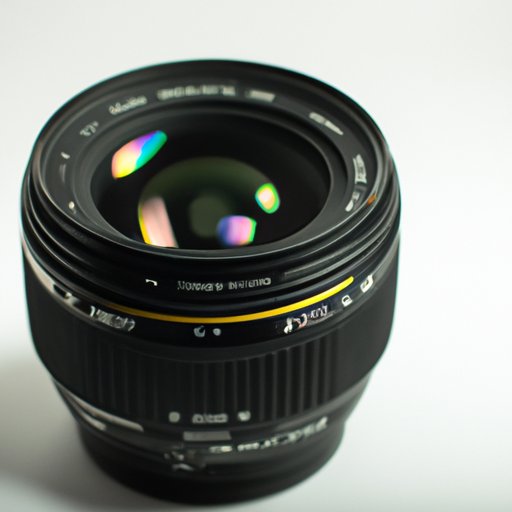Introduction
Portrait photography involves capturing a person’s likeness in a creative way. It is an art that requires skill, creativity, and the right equipment. One of the most important pieces of equipment when it comes to portrait photography is the lens. Different lenses have different characteristics, and the right lens can make a huge difference in the quality of your photos.
There are two main types of lenses used for portrait photography: prime lenses and zoom lenses. Prime lenses are fixed-focal length lenses, meaning they cannot be adjusted for different focal lengths. Zoom lenses, on the other hand, allow you to adjust the focal length of the lens, allowing you to zoom in or out as needed.

Comparing Prime vs Zoom Lenses for Portrait Photography
When it comes to choosing the right lens for portrait photography, there are pros and cons to both prime lenses and zoom lenses. Prime lenses generally offer better image quality than zoom lenses due to their larger aperture and simpler optical design. However, they also tend to be more expensive and do not offer the flexibility of a zoom lens.
Zoom lenses offer more versatility and are typically more affordable than prime lenses. They also allow you to capture images from different angles and distances without having to physically move the camera. However, zoom lenses tend to have smaller apertures, which can lead to lower image quality.
When choosing between prime and zoom lenses for portrait photography, you should consider factors such as budget, desired image quality, and the type of portraits you plan to take. For example, if you plan to take close-up portraits of people, a prime lens may be the best option due to its large aperture and sharpness. However, if you plan to take portraits from a distance, a zoom lens may be more suitable.
A Guide to Choosing the Best Lens for Your Portrait Photography Style
Once you’ve decided between prime and zoom lenses, the next step is to choose the right lens for your portrait style. Different focal lengths are better suited for certain types of portraits. For example, wide-angle lenses are great for environmental portraits, while telephoto lenses are better for headshots.
In addition to focal length, there are other factors to consider when choosing a lens for portrait photography. Popular portrait lenses often come with features such as image stabilization, fast autofocus, and weather sealing. These features can help you get sharper images in low light and unpredictable weather conditions.
When it comes to budget, there is a wide range of lenses available for portrait photography. You can find lenses that range from very affordable to extremely expensive. When choosing a lens, consider your budget and the features you need. For example, if you’re just starting out, you may want to opt for a cheaper lens with fewer features, while a professional photographer may want to invest in a more expensive lens with advanced features.
Conclusion
Choosing the right lens for portrait photography can be daunting, but it doesn’t have to be. By considering factors such as budget, desired image quality, and the type of portraits you plan to take, you can find the perfect lens for your needs. Prime lenses offer excellent image quality but are usually more expensive, while zoom lenses are more versatile and affordable. Different focal lengths are better suited for certain types of portraits, so be sure to consider your portrait style when making your choice.
In summary, the best lens for portrait photography is the one that meets your needs and budget. With the right lens, you can create stunning portraits that will last a lifetime.
(Note: Is this article not meeting your expectations? Do you have knowledge or insights to share? Unlock new opportunities and expand your reach by joining our authors team. Click Registration to join us and share your expertise with our readers.)
